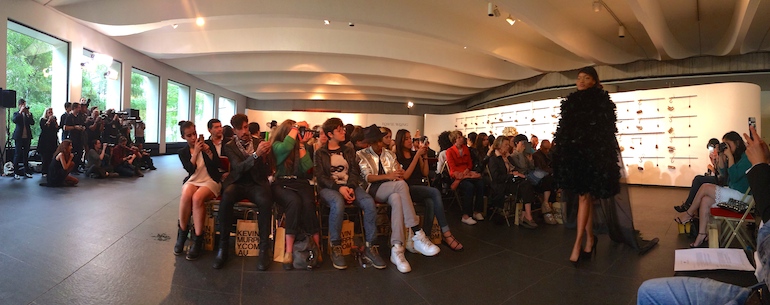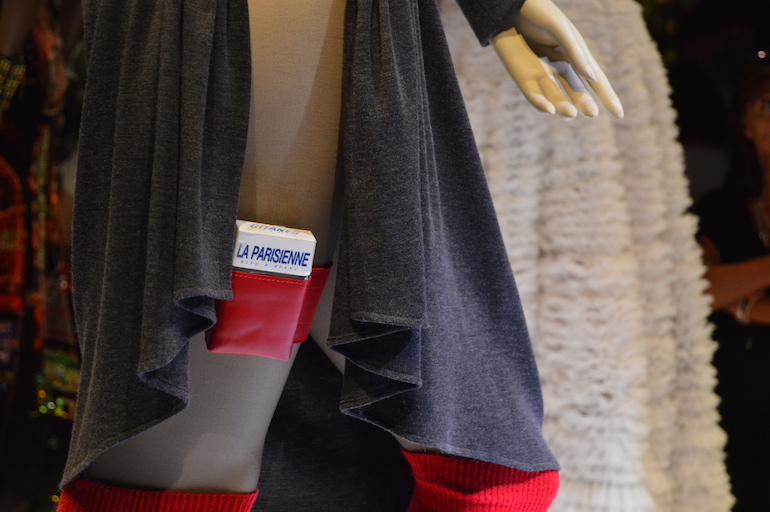It was wasn’t long ago that France passed a controversial new law, one that has been talked about for months. The bill states that any models who wish to work in France will be asked to provide a doctor’s note during the casting process to ensure that their BMI and overall wellness is appropriate for their line of work and meets national standards of health.
This law represents months of work put in by France’s President Hollande who is fervently trying to shed light on (and stop) the dangers of anorexia, a mental illness which has the highest mortality rate of any.
Fashion houses or agencies that overlook the new requirement or are caught in attempts to skirt it can be fined up to 75,000 euros and even face jail time. In addition, the bill also requires that published photos be flagged as “photo-shopped” when applicable.

Photo by Sierra Conine
France is not the first country to begin redefining model standards within the fashion industry. It was just two years ago that Israel passed a similar law banning underweight models, and Spain and Italy as well have set new precedents in an effort to demote anorexia and dispel skeletal, unhealthy standards that are implicitly associated with the industry and profession.
It is no shock that when targeting anorexia, governments first cast an eye on the fashion industry. The evolution of the supermodel has changed drastically, and somewhat dangerously, over the past century.
The idealization of certain body types and of models started in the early 1900s with Gibson girls; robust and voluptuous women with generous hips and busts. Gibson Girls were the archetype of physical fitness and health.
From there an evolution of beauty took flight, but it wasn’t until half a century later that beauty began to precariously flirt with a line of malnutrition and contrived reflections of the rest of the population. In the 1970s after Twiggy, a waiflike model of 112 pounds, infiltrated the fashion world, it became more popularized and de la mode to be thin.

Photo by Sierra Conine
It was during this time that more and more light was being shed on the dangers of anorexia. A decade later heralded a new era deemed “Heroin Chic,” popularized by models such as Kate Moss which idealized bony women who mimicked bodily manifestations of drug use.
Whether France’s new law will be effective is questionable. There are doubtlessly innumerable ways to circumvent the subjective definition of health, a definition which is entirely dependent on the doctor.
Instead of drawing a definite line as to what BMIs are classified as unhealthy, France chose to allocate the power of determination to the physician, who is not only supposed to consider BMI, but weight, height, gender and other factors when assessing if a model is fit enough to work.

Photo by Sierra Conine
Despite its potential flaws or the question of its efficacy, this law holds more weight than just attempting to expunge unhealthy models from the catwalks in efforts to curb the mental disease. France is one of the epicenters of fashion and has been since the early 1900s when Paul Poiret and Coco Chanel reinvented women’s apparel and heralded in a new era of style.
Because of this incredible influence the country has, attempting to redefine body standards and health standards in the world of couture will likely catalyze other giants in the industry to follow suit, or at least consider what President Hollande is trying to achieve.

Photo by Sierra Conine
This law won’t only shed light on unhealthy weights in the fashion world, but will also hopefully slowly reshape ideals of beauty with a new emphasis on health. A transformation of this caliber will reach far beyond those who wear the clothes down the runway; it will affect the boys and girls, men and women who look at the models upon the runways as impossible paradigms that they still strive to mimic.
While this transformation by no means is going to take hold overnight, or even in the next year, what matters is that France, as well as Italy, Israel and Spain, are one by one redefining current standards of beauty towards a more realistic and healthful ideal.

Photo by Sierra Conine


